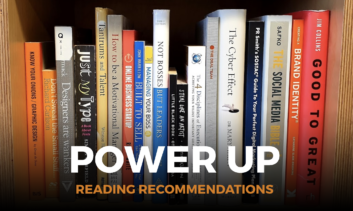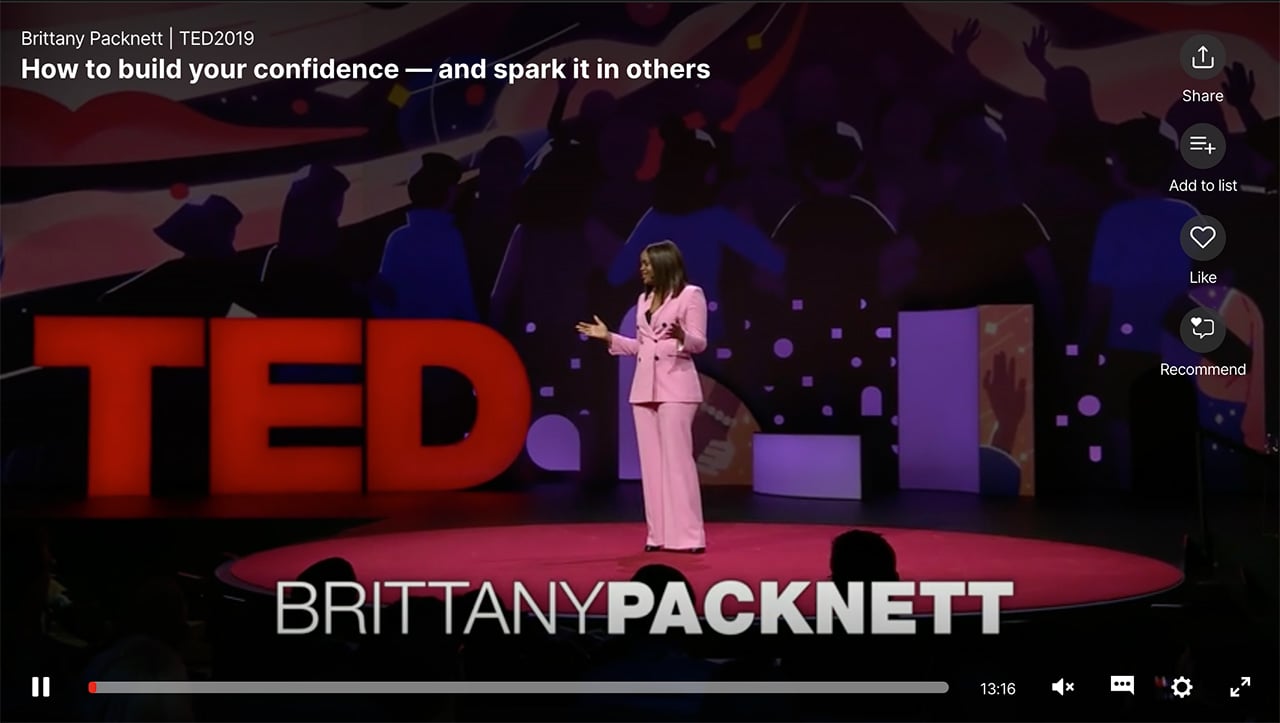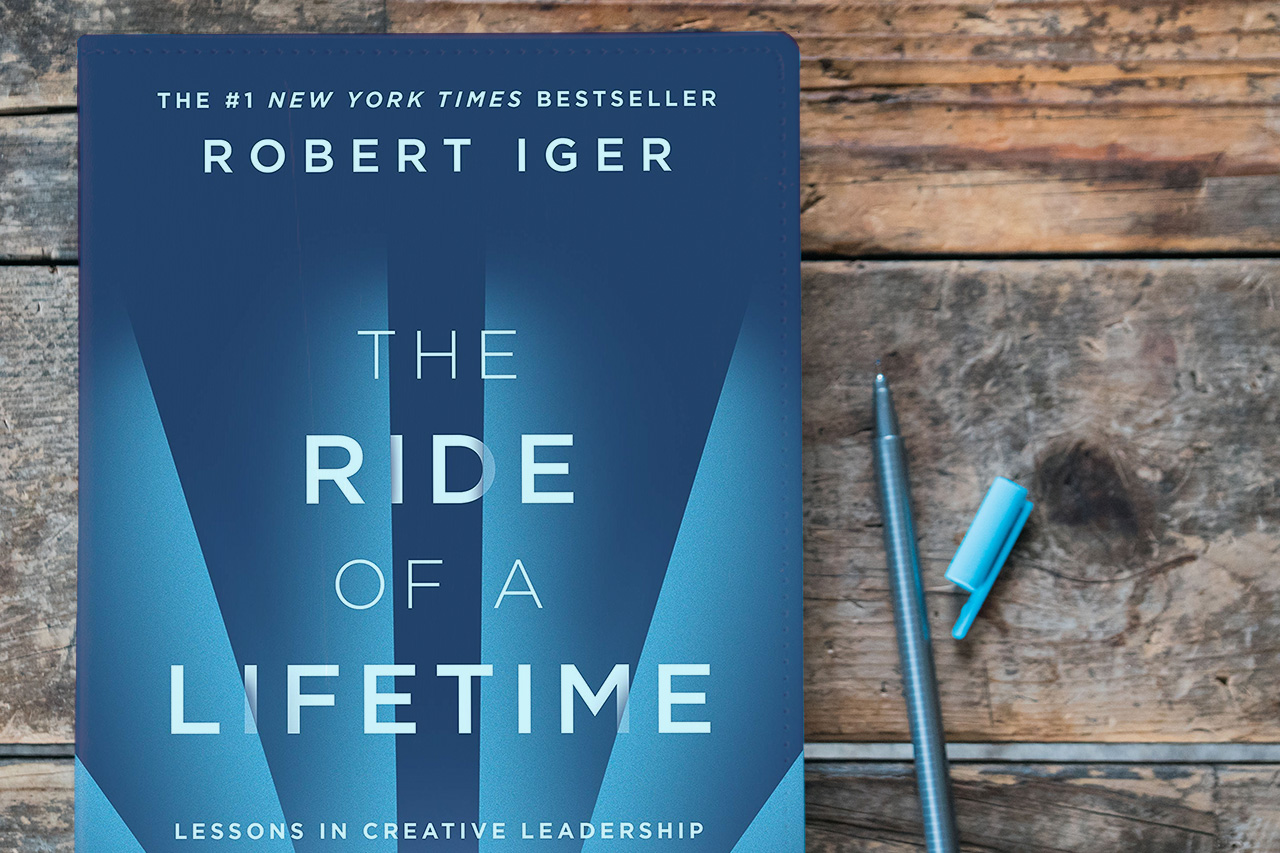With the team at StrategiQ ever growing, this month we welcomed two new members to our Power Up collective: Sophie and Jordan. As the team grows we continue to share knowledge and insights between the office teams, bridging gaps between departments and building strong interpersonal relationships.
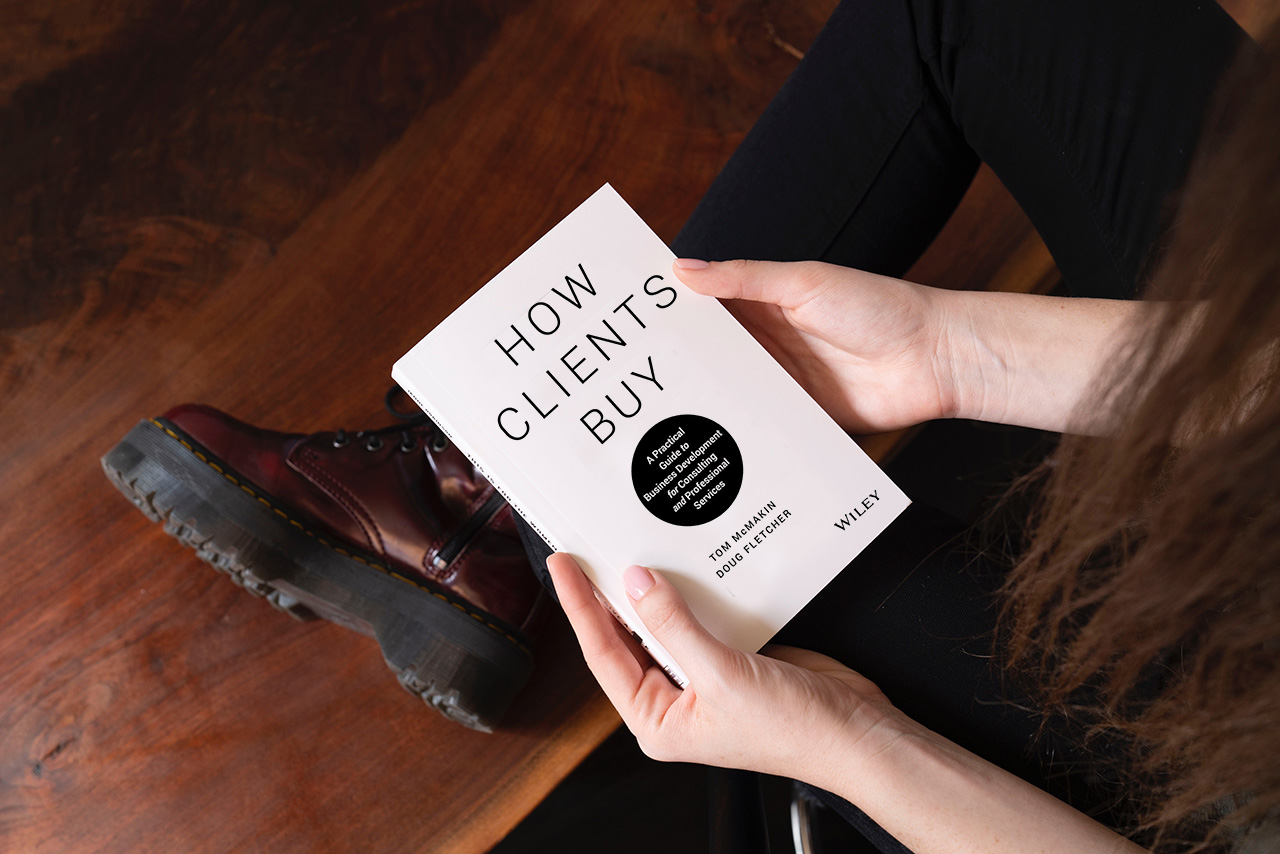
How Clients Buy
Author: Doug Fletcher, Tom McMakin
Reader: Ian
Speed rating: 6.5/10
How Clients Buy is a look at business development in the professional services world, when your expertise is your product. The book looks at developing new skills that will help readers make connections, develop rapport, create interest, earn trust, and turn prospects into clients.
Whilst there were a few fantastic nuggets of information and timely reminders, there were also large sections of ‘made up’ history about sales and trading through the ages. These sections did not add anything to the book apart from length.
Key learnings
- Scrap the sales pitch in favour of honesty, positivity, and value. Don’t sell, just help their company using your expertise.
- Services are often under-valued (compared to products), and become among the first things to go when budgets get tight. Building up the value is about finding the problems and showing the impact of the solutions.
- Be an aggregator or useful content for potential clients. If you find a story about their industry, send it over to them. Show you are keeping up to date with their sector without being pushy.
Read it yourself: https://amzn.to/3lq4xdb
Purpose will be central to rebuilding brands, post-Covid
Author: Tanya Joseph, Marketing Week
Reader: Levi
Speed rating: 8/10
Key learnings
“Business shouldn’t look the same after Covid – brands should recognise that purpose creates distinctiveness and will be key to future growth.”
- We’re not yet past the pandemic – we’re just past the shock and realisation phase.
- Covid, in all its horror, has also given us the opportunity to reassess what successful business looks like, and to re-establish ourselves as better businesses.
- “The businesses that will not just survive, but thrive, over the coming months and years will be those whose leaders embrace the notion that there is no merit in profit without purpose”. I believe this is why StrategiQ has remained strong through this difficult period – we’ve always had purpose.
- Being transparent and authentic with your employees and customers – the good, bad and the ugly parts included – offers a level of trust and compassion from customers and employees that helps keep that purpose, and your business alive.
Read it yourself on Marketing Week
Get purpose obsessed, your customers are.
Author: Kara Prosser (Global director at Isobar Good), The Drum
Reader: Elliot
Speed rating: 8/10
Key learnings
- PURPOSE DRIVES GROWTH – We’ve all had time recently to re-evaluate what matters to us most, and as consumers we’ve curated what brands and products we stand by, and where necessary, we’ve culled those that don’t enrich our lives.
In this blog the author, Kara Prosser, acknowledges; ‘Brands with purpose at their core grow twice as fast as others. They have a brand valuation increase of 175% over the past decade compared to a significantly slower 70% growth rate for brands with a lower sense of purpose, according to Kantar’s Purpose 2020 report.’ Kara also highlights sustainability practices across product design, facilities and supply chains, alongside transparency as key motivating factors behind user behaviour. - PURPOSE ENABLES AGILITY – ‘Without a solid purpose and impact strategy, it’s hard for brands to react in a timely, appropriate and meaningful way to world events.‘ The example of Nike’s speedy, reactive campaign For Once, Don’t Do It is used, which was launched within 24 hours of the BLM protests in the US, showing support and solidarity behind the movement without compromising Nike’s existing values.
Whilst other brands were fighting for sales, Nike was fighting for it’s audience’s rights. These are the big brand moves that will be remembered, and as a result, drive customer loyalty over sales offers and trends. - PURPOSE BUILDS CONSUMER TRUST – ‘In 2018, 88% of customers would buy a product from a purpose led company and 66% would switch from a product they typically buy to a new product from a purpose led company (Cone/Porter Novelli, 2018)’.
Mirroring Nike’s BLM ad as mentioned above, here the numbers speak for themselves. Another example used is Dove’s change of focus from being a 90’s brand that sells nice soap, to being an ambassador for how the world perceives beauty in women, and how women see it in themselves. This message has stood the test of time, and permeates it’s way through all facets of Dove’s marketing and advertising – selling a value much greater, and more personal, than just smelling nice.
Read it yourself: https://www.thedrum.com/get-purpose-obsessed-your-customers-are
How to build your confidence and spark it in others
Speaker: Brittany Packnett
Reader: Be
Speed rating: 7/10
Key learnings
I’m fascinated with confidence. I have never struggled with it myself and therefore always try to instill it in others. In this short talk, Packnett discusses the importance of confidence and the failings of schools for not teaching it.
Key Takeaways:
- We place value on knowledge, expertise and talent and less focus on the “soft skill” of confidence, when it’s confidence that changes the world.
- Confidence is the difference between being inspired and actually getting started, between trying and doing it until it’s done. Confidence helps us to keep going, even after failure.
- A unique method of finding confidence is to do things your own way and not feel pressured to conform to the process or timelines of others. By doing this, you will build confidence that you can do things, you just need to discover a way that works from you. I might not be your skills or expertise, but in fact fitting into someone else’s process.
Listen to it yourself – https://www.ted.com/talks/brittany_packnett
The Ride of a Lifetime: Lessons Learned from 15 Years as CEO of the Walt Disney Company
Author: Robert Iger
Reader: Jordan Bambridge
Speed rating: 8/10
Key learnings
- Have a relentless passion for perfection
Setting standards are normal but when you work for a company like Disney, every single member of staff has been inducted into its vision of providing a magical experience for its audiences. What was clear from this book is that It’s not a set of rules nor process but so deeply ingrained in a person’s mindset. What this book taught me was that there is no alternative, if you want to be the best you have to strive for perfection in everything you do.
- Pessimism at the top
One lesson that really struck me was that true leaders must have the ability to be consistently positive at the top. This isn’t to say that it’s all sunshine and rainbows, but employees do not want to follow a pessimist, especially for a company like Disney. This level of positivity can only trickle down an organisation rather than negativity! - Be Bold
When Disney bought Pixar, it had many financial analysts struck by the cost of the sale, especially when Disney had its own animation department! This book gives a real insight into Bob Iger’s working relationship with Steve Jobs who does not only put up a huge fight for Pixar but put Disney through its paces to understand why they were looking to buy Pixar. Was it to crush the opposition? This book is about making the bold decisions not only to buy Pixar but to offer Steve Jobs a seat at the highest table in Disney. This helpfully links back to the first Key Learning point, Steve Jobs truly believed in Disney’s vision for chasing perfection.
Read it yourself: https://www.audible.co.uk/The-Ride-of-a-Lifetime-Audiobook/
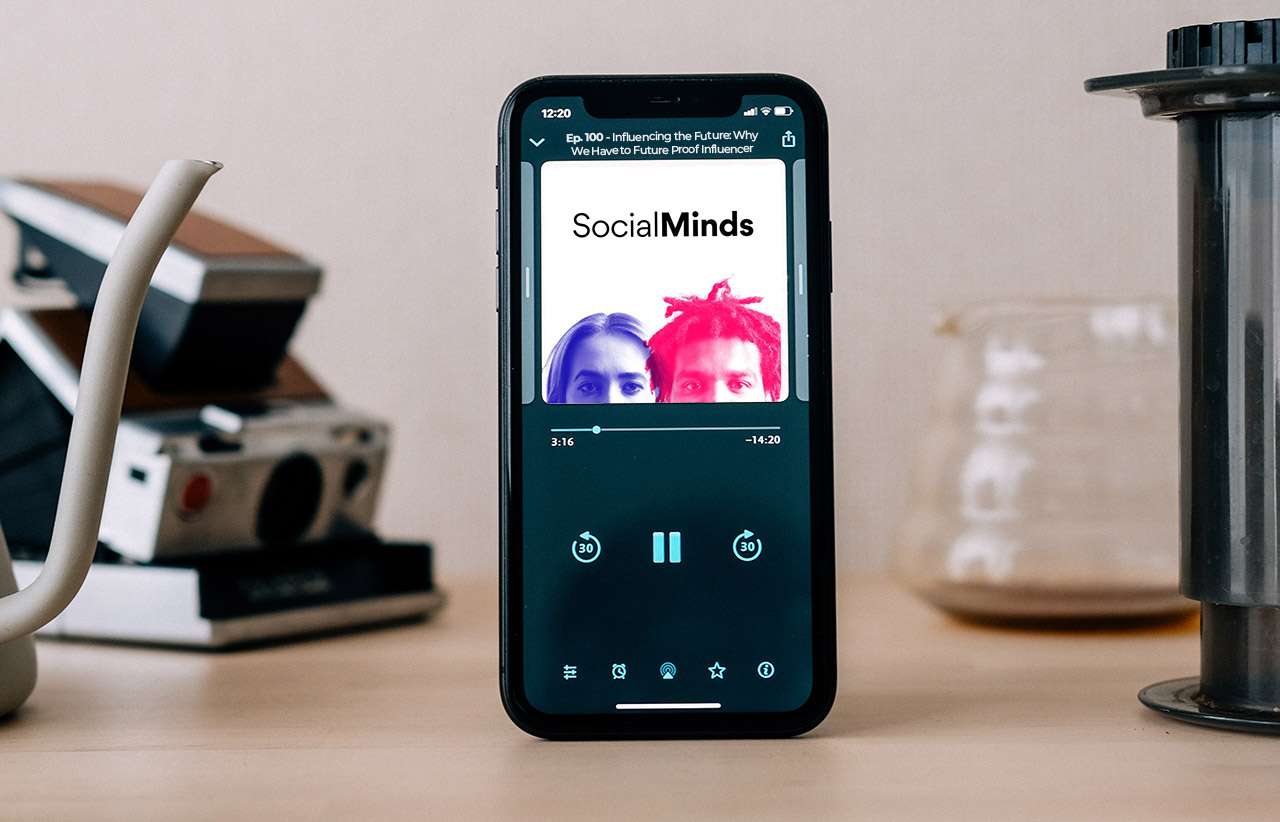
Influencing the Future: Why We Have to Future Proof Influencer Marketing Now
Author: Rahul Titus – Ogilvy and Theo & Eve – Social Chain
Reader: Sophie Coe
Speed rating: 7/10
Key learnings
- Think of Influencers as Multi-Channel Agents
Never think of influencers as figures who exist only on social channels. Make the most of your connection by considering using influencers for copywriting, radio adverts, paid social and TV. - Expansive semiotics of the term ‘Influencer’
An Influencer is any individual who has an influence over your consumer, from a celebrity without a social media presence to a vlogger or even a consumer with 100 followers. - Don’t be nervous
Many brands are nervous about working with influencers because they are unsure of the legal implications and consider influencing a ‘dirty word’ associated with crass product placement. Titus reminds listeners that brands should treat influencers as collaborators or creative consultants.
Listen yourself: https://podcasts.google.com/
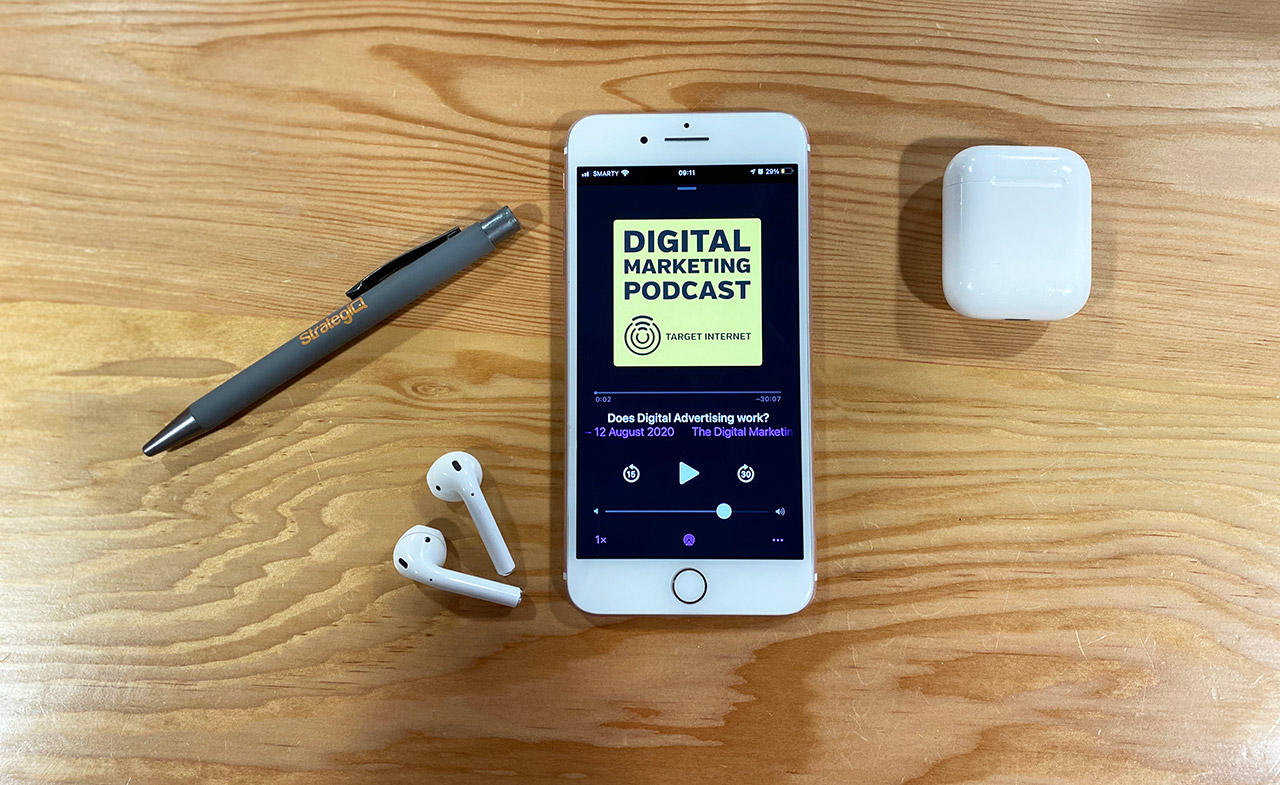
Does Digital Advertising work?
Author: Digital Marketing Podcast
Reader: Emma
Speed rating: 9/10
Key Learnings
- Digital advertising does not work as a solo marketing strategy, we may think everyone is impacted by digital but it is not the most effective way to drive sales.
- Thinking that digital is the most effective way to market a business means that the brand is no longer relevant.
- We are putting too much emphasis on individual marketing strategies to work for a business, when in fact a mix of digital, print and ‘older’ advertising techniques seem to have the best impact on sales strategies.
Read it yourself: https://podcasts.apple.com/the-digital-marketing-podcast/

Design Trends 2020
Author: Hillary Archer
Reader: Be
Speed rating: 10/10
Key learnings
As this year has taken an unexpected turn with the global pandemic of coronavirus, design trends have shifted to meet the new needs of businesses and consumers alike. This interesting blog takes us through 9 of the most prominent design trends of 2020.
- Designing for good. With the rise in protests and activism in 2020, consumers are looking for brands who align with their values.
- Minimalism, one of the longest standing design trends is being used to help reflect honesty and transparency across industries.
- Typography & Mixed media is being used to reflect propaganda posters and break through noise in 2020.
Read it yourself: https://www.shillingtoneducation.com/blog/graphic-design-trends/
A Corona Xmas: Why physical stores will power online shopping this holiday season
Author: Greg Sterling, Search Engine Land
Reader: Poppy
Speed rating: 6/10
Key learnings
“Whilst the majority of buying happens online, the presence of local stores will be a significant factor with consumer decision-making this festive season.”
- The main assumption for Christmas 2020 is that the majority of shopping will take place online and physical stores will suffer. However, physical stores will play a significant part on how consumers choose to spend their money.
- Consumers this year will be more budget conscious, more selective and less impulsive. Whilst discounted prices and free shipping have always been strong incentives for customers, stronger offers may be required for audiences that have been bombarded with promotions over the last few months.
- Brands are expected to get more aggressive with their marketing both at the top and bottom of the funnel as retailers seek to find gaps within overcrowded market places. Good news for Google and Facebook!
- Core shopping holidays (e.g. Black Friday and Cyber Monday) are expected to be less concentrated with promotions running across more drawn out periods.
- A proportion of shoppers will still want the same gratification of in-store shopping but will want to minimize time in public spaces. Being able to return items to a physical store is also likely to be a key decision maker for online Christmas shoppers. Searches for ‘in stock’ terms have seen a significant rise since lockdown and this is expected to rise over the festive period, especially for those that are wanting to visit the store to purchase.
Read it yourself – https://searchengineland.com/a-corona-xmas-why-physical-stores-will-power-online-shopping-this-holiday-season
Read the nation’s mood before you commit to your Christmas campaign
Author: Mark Ritson, Marketing Week
Reader: Levi
Speed rating: 7/10
Key learnings
“At our first Covid Christmas, consumer sentiment could range from weary resignation to a desire for escapism, and brands will have to set the right tone.”
- It’s important to read the room before engaging in marketing activity.
- It’s really easy to try and brush how people feel under the rug to stick to your plan – but ultimately, we’re not going to know how this pandemic has affected our customers until Christmas really comes around, and how it’ll affect businesses
- Avoid doing unhelpful research – thinking about how you might feel now vs in six months time is almost impossible, so why expect it of your customers?
- “You can reflect on tragedy and challenge while also providing a genuinely uplifting coda. In fact, you might even argue, without hardship and difficulty it’s impossible to savour the peace and pleasure that comes with its resolution.”
- Think about the brand you want to be and how you want to present yourself over the Christmas season.
Read it yourself: At Marketing Week
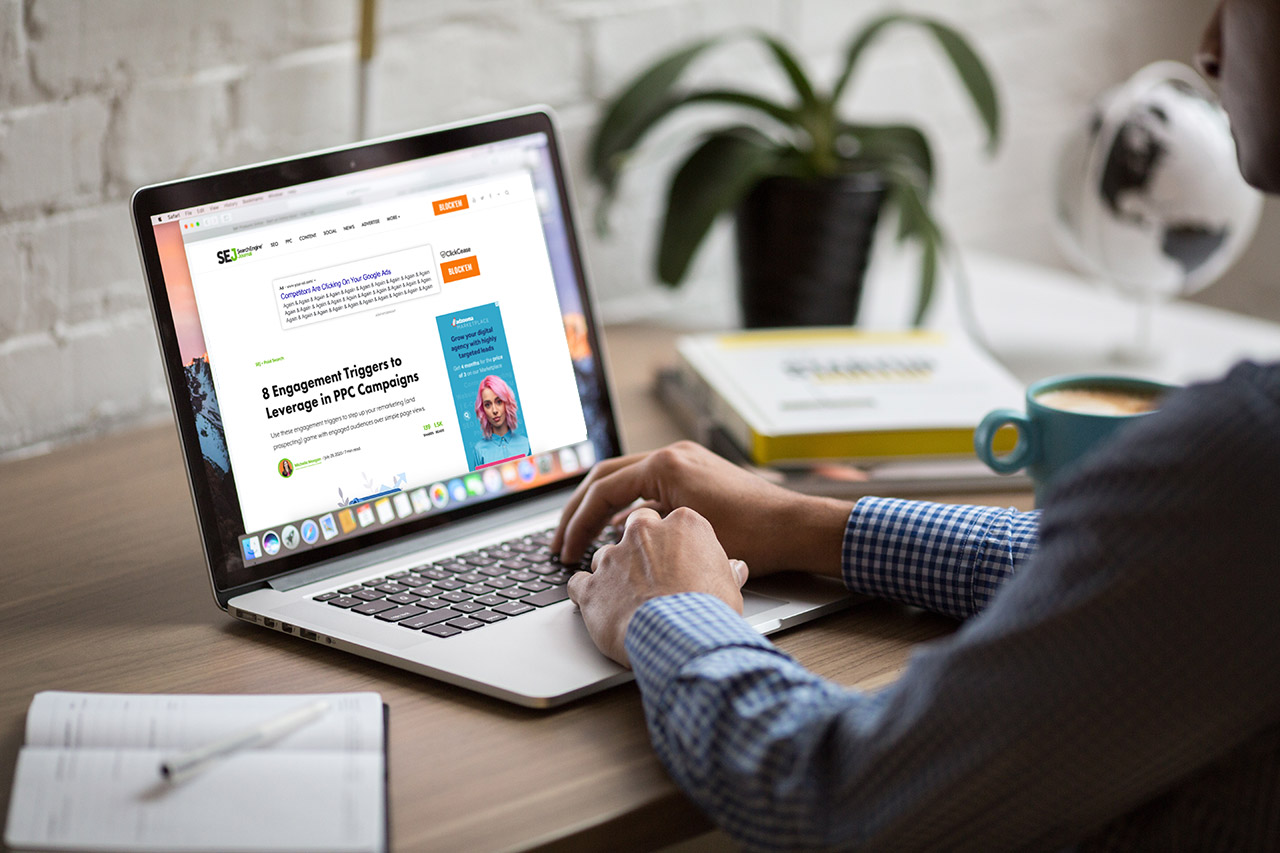
8 Engagement Triggers to Leverage in PPC Campaigns
Author: Michelle Morgan, Search Engine Journal
Reader: Elliot
Speed rating: 8/10
Key learnings
With any advertising campaign it’s vital to keep your key goals at the centre of everything you do – whether that’s lead generation, sales, retention or brand awareness. But sometimes we can miss the little steps in-between that contribute towards the big results. Getting more in-depth with GTM is a personal goal of mine, and this guide on Search Engine Journal has provided some great, practical tips that can help us take a closer look at how paid-traffic behaves (and how we can optimise for it).
Multi-page views: ‘When was the last time you visited a website you had no interest in and browsed 5 or more pages? Let me answer, literally never – because nobody has time for that. Similar to time, the more pages someone views on your site the more qualified they could be.’
Optimisation based on these micro-conversions in Ads would allow us to raise bids for an engaged user, who is more likely to convert.
Likes/Follows/Engagement: We already create audiences to target on social media with lead gen and retention campaigns, but there’s more that can be done using this data by creating exclusion lists for purely awareness-based campaigns that are there to drive brand visibility, likes or email sign-ups. This could also be used to advertise special offers or services to new customers, that you don’t want visible to existing ones, and conversely exclusive rewards to followers only.
YouTube Audiences/Video Engagement: If you’re looking to build your brand’s presence on the second-largest search engine behind Google (or if you’ve already got an established presence on YouTube), you can use GTM to create audiences based on video views, view completions and subscribes to either re-target or exclude in other Google Ad campaigns. We can also use similar tools within Facebook to refine or expand targeting too.
Read it yourself: https://www.searchenginejournal.com/ppc-campaign-engagement-triggers/
Will brands boycotting social media be less effective? / Data Reveals Effects of Facebook Ad Boycott
Author: Grace Kite, Marketing Week / Taylor Bern, Social Bakers
Reader: Sophie
Speed rating: 7/10
Key learnings
The past few weeks have seen 90 major brands including Coca-Cola, Starbucks, P&G, Disney, General Motors and Unilever pull advertising from Facebook as part of the ‘Stop Hate for Profit’ campaign, which is calling on the social network to implement stricter measures around hate speech on its platforms. In this article, Grace Kite asks, what is the cost of taking a stand, questioning the social effectiveness of silence.
A case for the variability of socials: In light of the fact that return on investment is much more variable for social than for most other channels, Kite reminds readers that ‘All brands considering significant investment into social channels need to experiment and evaluate, and not only using Facebook’s own tools. Only then will they know if they should be in the ‘love it’ or the ‘hate it’ camp.’.
Every brand is a specific case for socials: Kite presents data to prove the variability of social channels for different products. ‘In our database of past projects it is low interest categories – insurance, politics, banking, toilet paper – that see small effects of social advertising and so investment that sometimes doesn’t pay back. On the other hand, high interest categories like beer, TV, and video games see much bigger effects.’
Is boycotting an effective form of commercial activism?: Whilst Facebook Ad spend decreased by 31% in the first week of July, it is unlikely to have hurt facebook long-term, with Mark Zuckerberg ensuring his staff that most advertisers will return to the platform, and this proving true in most cases. Indeed, the dwindling impact of this boycott invites us to question whether brands should speak out rather than shutting up.
Read it yourself: https://www.socialbakers.com/blog/effects-of-facebook-ad-boycott
https://www.marketingweek.com/grace-kite-brands-boycotting-social-media-less-effective/
Why specialising early doesn’t always mean career success.
Speaker: David Epstein
Reader: Be
Speed rating: 10/10
Key learnings
There is often so much pressure to find a niche or specialise in one thing throughout the education system, but this TED Talk from David Epstein give examples of how impractical and untrue that is. Going through examples of famous people who have taken an unconventional career path, Epstein shows there is value to having broader experiences and skill sets.
- Many people have the thought that it takes 10,000 hours of focussed practice to be an expert and because of this, you must start early to find your area of specialism. The poster child for this method if Tiger Woods who famously started playing golf at 7 months old and was the greatest in the world by the age of 21.
- There are far more success stories of very credible experts who have had a sampling period (varied experience as opposed to practice in one area) however, because this is harder to put into a formula, people cling to the liner 10,000 hours approach.
- People who specialise early tend to win in the short term in terms of wealth and job prospects but lose in the short term because they often end up wanting to change career or reach a ceiling. People who specialise later tend to lose in the short term but win in the long term by have a diverse skill set that makes them more agile and adaptable to new things.
Dyson Freeman said “For a healthy ecosystem we need both birds and frogs, frogs are down in the mud focussing on the granular detail while the birds are above integrating the knowledge and seeing the opportunity.”
Listen to it yourself: https://www.ted.com/david_epstein_why_specializing_early_doesn_t_always_mean_career_success
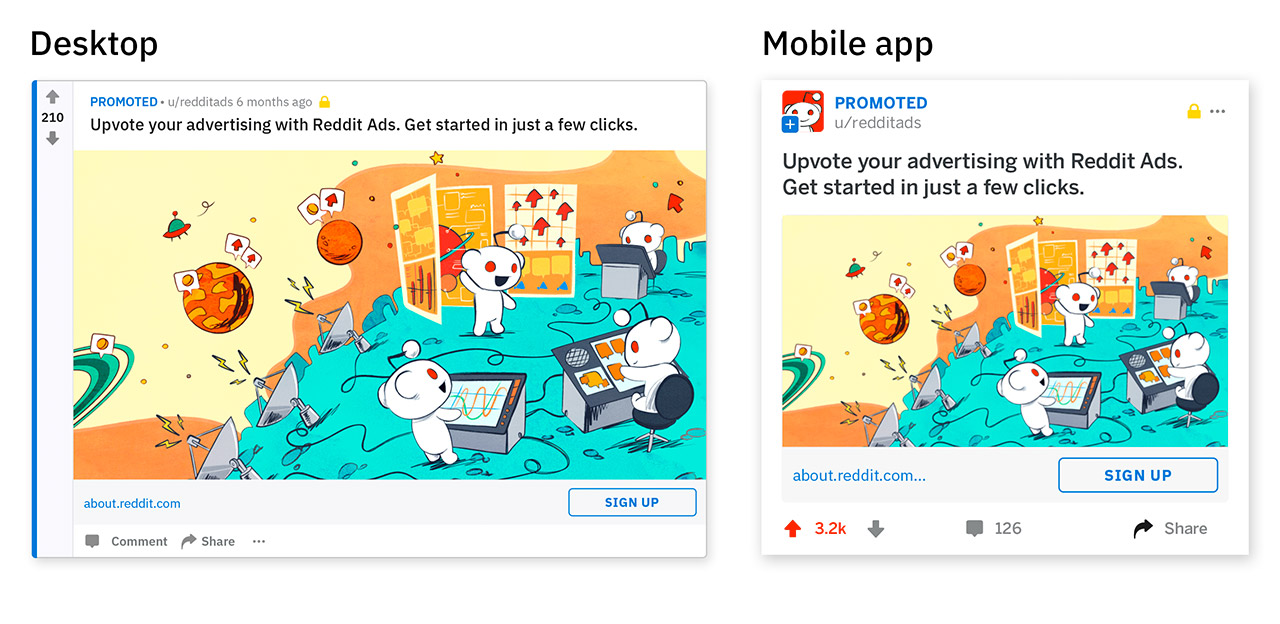
Reddit Advertising: Is it Worth it?
Author: Effective Spend
Reader: Elliot
Speed rating: 8/10
Key learnings
A goal of mine is to think outside of the box with advertising strategies, and not rely solely on standard paid channels. Reddit was at the top of my list for B2C paid advertising.
Key takeaways:
- Is it worth it? Short answer: yes. Reddit is a unique social platform that offers great benefits that aren’t replicated elsewhere. Reddit advertising is cheap, low-funnel traffic with a highly-engaged audience and wildly specific targeting. It’s a dream come true for PPC marketers, plus offers a great opportunity for organic promotion.
- Subreddit rules and culture matter: you need to have a deep understanding of the platform and its users more so than other digital channels. Without a proper understanding of where an ad will be placed, the community can react negatively and the effectiveness of the ad will be severely limited.
- Be 100% authentic: Know this: Reddit users are highly engaged. Following the technical rules of the subreddit isn’t enough. Redditors know how to spot a fake user coming from a mile away. They’re not there for an onslaught of ads and posts that don’t add value to their community. They can, and will, respond negatively. Users may upvote and downvote any type of content, including sponsored posts, so you need to know what they like before you start advertising on Reddit.
Read it yourself: https://www.effectivespend.com/blog/get-started-reddit-advertising/
